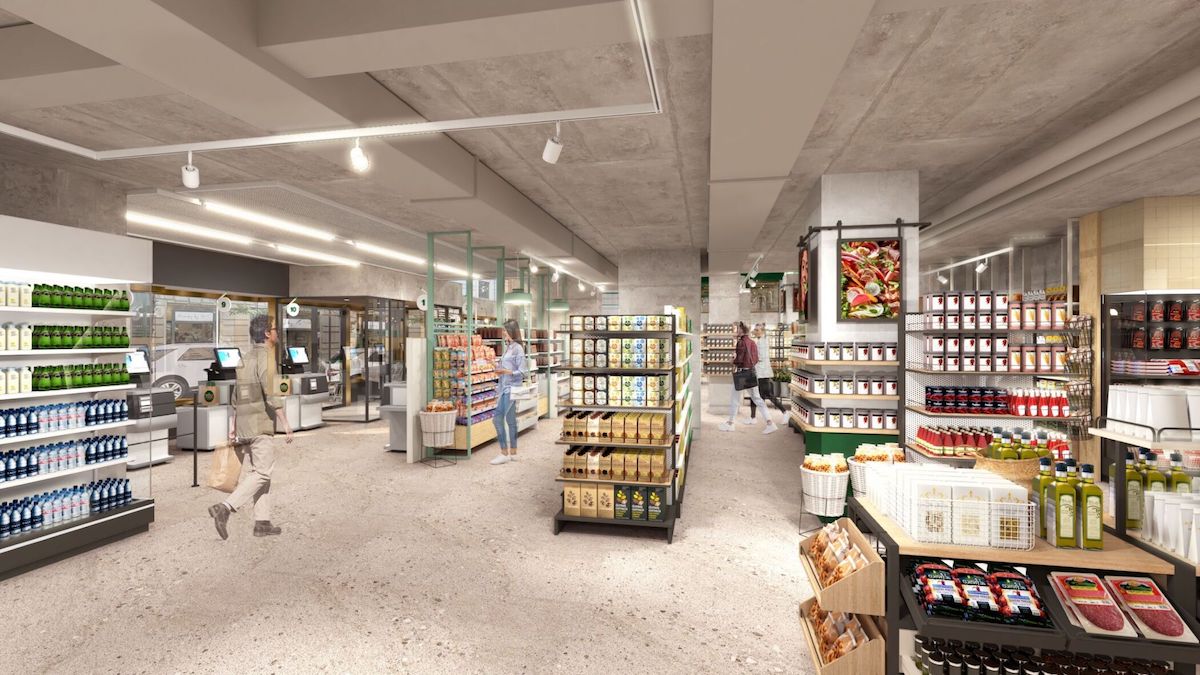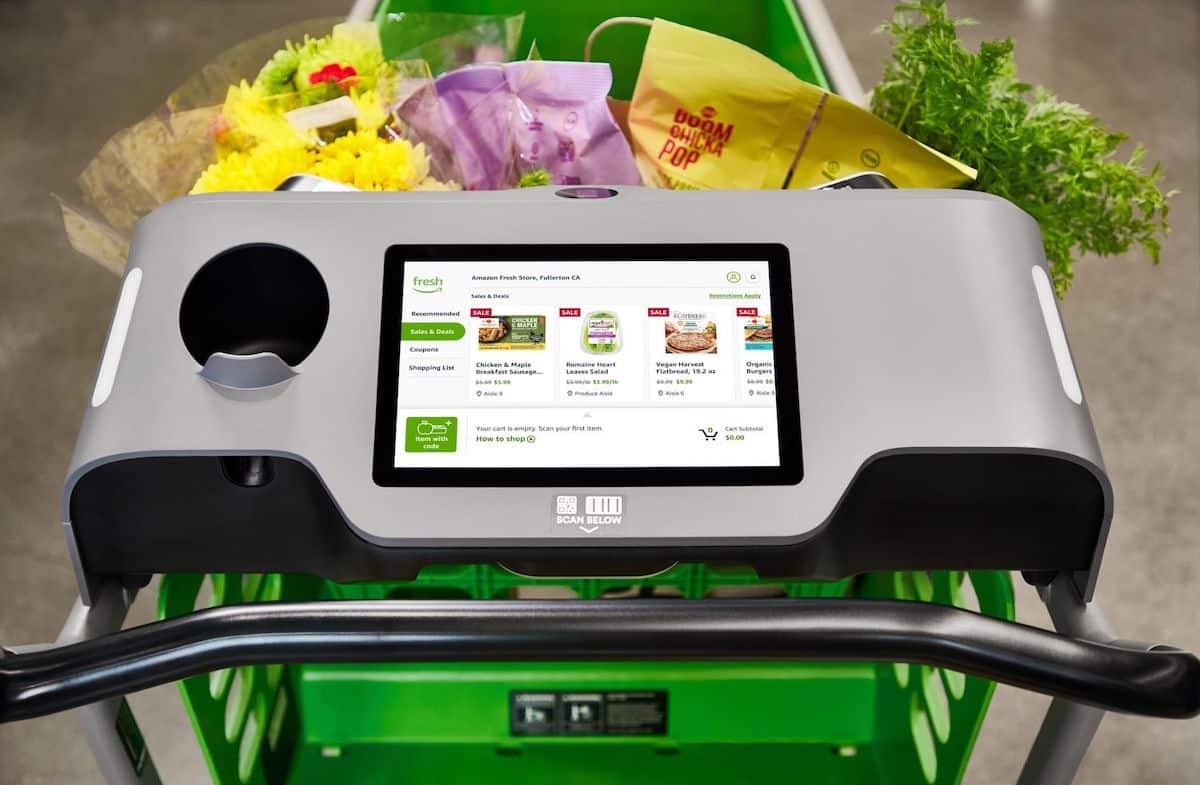Amazon’s US Grocery Expansion Could Disrupt Midwest Industrial Markets
The Midwest industrial real estate market, particularly in the Greater Chicagoland area and Wisconsin, is uniquely poised to be reshaped by evolving trends in the cold storage and food supply chain sectors. The rapid expansion of grocery-focused retail giants like Amazon Fresh and Whole Foods, combined with changes in consumer behavior, is driving demand for temperature-controlled warehouses and strategically located distribution centers.
Credit WGN News
Here’s how these market dynamics are expected to impact industrial real estate:
1. Increased Demand for Cold Storage Facilities
With companies like Amazon expanding their grocery operations—including revamped Amazon Fresh stores and new delivery services—demand for cold storage facilities is surging. Cold storage warehouses, which house perishable food items at controlled temperatures, are a vital link in the food supply chain.
Key Impact on Chicagoland Industrial Market:
- The Chicagoland area’s robust infrastructure and central location make it a prime hub for national food distribution.
- Developers are racing to build or retrofit existing warehouses into temperature-controlled spaces, especially near key logistics corridors such as I-55 and I-80.

2. Emergence of Grocery-Focused Fulfillment Centers
Amazon’s grocery strategy is centered on integrating its online and physical grocery platforms. Initiatives like shipping Whole Foods orders from Amazon Fresh fulfillment centers, as seen in Chicago, highlight the growing need for specialized industrial facilities that serve as dual-purpose fulfillment centers.
Market Implications:
- Location Strategy: Facilities closer to urban centers like Chicago will be prioritized for faster delivery times.
- Size Requirements: These fulfillment centers often require expansive square footage to house both ambient and cold storage zones.
3. Technological Advancements in Cold Storage
Innovations like Amazon’s Dash Cart technology for streamlining shopping experiences mirror the advancements occurring in cold storage facilities. Automation, robotics, and IoT-driven monitoring systems are becoming essential for maintaining inventory quality and streamlining operations.
What It Means for Industrial Real Estate:
- Newly built or upgraded cold storage facilities will need to incorporate cutting-edge technology, increasing upfront development costs.
- Property owners and investors who can offer state-of-the-art facilities will have a competitive edge in attracting tenants.
4. Urbanization of Cold Storage
Amazon’s recent debut of its smaller-format stores in Chicago and other urban markets signals a shift toward hyper-local grocery operations. This trend creates a need for urban cold storage facilities to support last-mile delivery.
Challenges and Opportunities:
- Urban cold storage requires innovative designs to maximize space efficiency in densely populated areas.
- Rising property prices in urban cores may push developers to explore vertical cold storage solutions.

5. Impact of Consumer Preferences on Supply Chains
Consumer demand for faster delivery and fresher food is reshaping supply chain networks. Retailers like Amazon are integrating multiple formats—such as grocery stores, small-format Whole Foods locations, and online platforms—to cater to these needs.
Industrial Market Adjustments:
- Facilities with access to multiple transportation modes (e.g., rail, air, and truck) will become increasingly valuable.
- Proximity to Midwest population centers, including Milwaukee and Madison in Wisconsin, is crucial for rapid delivery.
6. Food Supply Chain Resilience Post-Pandemic
The COVID-19 pandemic exposed vulnerabilities in the food supply chain, driving investments in localized and diversified networks. Companies are now rethinking their reliance on a few large facilities and instead embracing smaller, regional warehouses.
Trends in the Midwest:
- Wisconsin and Illinois will see heightened demand for mid-sized cold storage facilities that serve as nodes in decentralized networks.
- These facilities will mitigate risks and improve flexibility in the face of supply chain disruptions.
7. Investment Opportunities in Industrial Real Estate
The food supply chain is not just a challenge; it’s also a massive opportunity for investors. The increased demand for cold storage facilities has turned them into one of the most lucrative segments of the industrial real estate market.
Why Invest in Chicagoland and Wisconsin?
- Both regions offer unparalleled access to major highways, intermodal facilities, and a strong labor force.
- With industrial vacancy rates at historic lows, properties that meet cold storage specifications can command premium rents.
Conclusion: How Amazon’s US Grocery Expansion Could Disrupt Midwest Industrial Markets
The continued expansion of Amazon Fresh and Whole Foods, coupled with advancements in cold storage technology, is set to redefine the Midwest industrial real estate market. In Greater Chicagoland and Wisconsin, developers and investors should focus on acquiring or retrofitting properties that align with the evolving needs of grocery-focused supply chains.
Key Takeaway for Stakeholders: Staying ahead in this competitive market requires understanding how changes in consumer behavior, technology, and logistics intersect. By capitalizing on these trends, industrial real estate professionals can position themselves as leaders in a rapidly growing sector.
For more information about Chicagoland’s industrial real estate opportunities, reach out to our team of commercial real estate experts.

